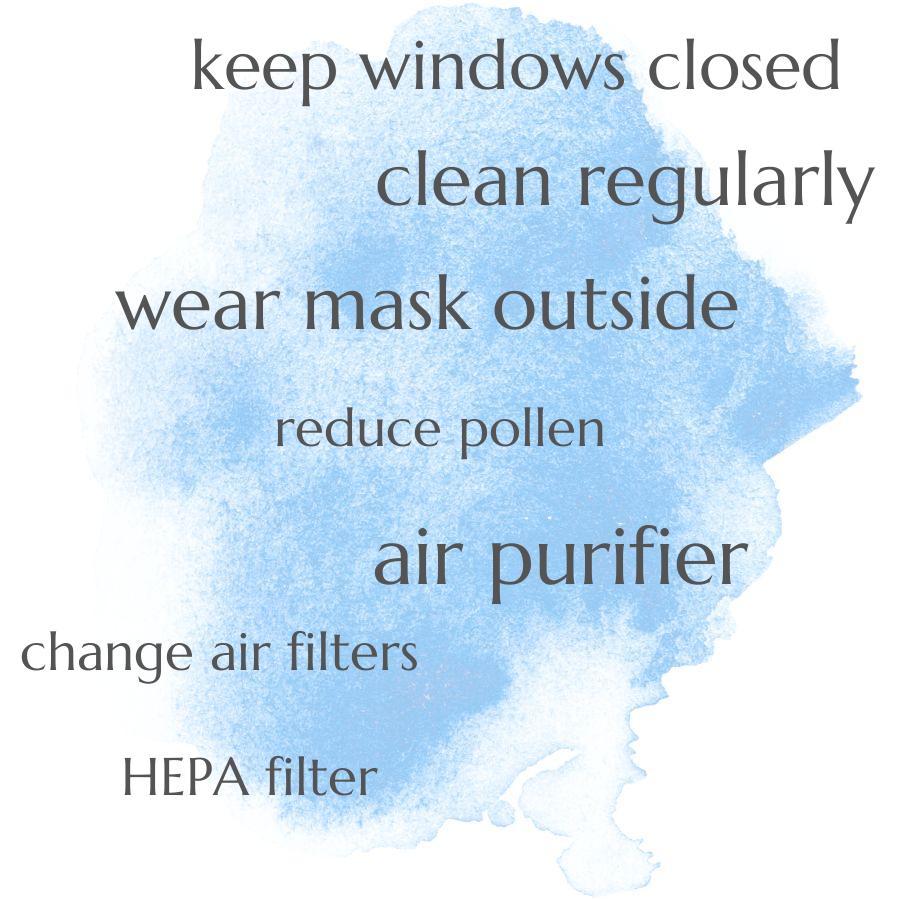Using an air purifier with a HEPA filter can help reduce the amount of pollen in your home’s air.
Do you suffer from seasonal allergies? If so, you know how difficult it can be to manage the symptoms when pollen is in the air. But did you know that there are steps you can take to reduce the amount of pollen in your home’s air? In this blog post, we’ll discuss some simple and effective ways to reduce pollen levels in your home and make life a little easier for allergy sufferers.
Clean Regularly

This means vacuuming, dusting, and mopping on a regular basis. Vacuuming helps to remove pollen from carpets and upholstery, while dusting removes it from surfaces like shelves and furniture.
Mopping can help to remove any remaining pollen particles that have settled on the floor. Using a damp cloth or mop when cleaning can help capture more of the airborne pollen particles that are floating around in your home’s air.
Regularly changing out air filters in heating and cooling systems can also help reduce the amount of pollen circulating throughout your home.
Change Air Filters Often
Air filters are designed to trap airborne particles, such as pollen, dust, and other allergens. When these particles become trapped in the filter, they can no longer circulate through your home’s air.
By changing your air filter regularly (at least every three months), you can ensure that any trapped particles are removed from your home’s air and replaced with fresh clean air. Using a high-efficiency particulate arrestance (HEPA) filter will help capture even more of the tiny pollen particles that may be circulating in your home’s air.
Keep Windows Closed
When you open a window, pollen from outside can enter your home and circulate through the air. This can cause allergies or other respiratory issues for those living inside.
To prevent this, it is best to keep windows closed as much as possible, especially during times when pollen counts are high outdoors. If you need fresh air in your home, consider using an air purifier with a HEPA filter that will help capture airborne particles like pollen before they enter the room.
Use an Air Purifier
Air purifiers work by trapping airborne particles, such as pollen, and removing them from the air. This helps to keep your indoor air clean and free of allergens that can cause symptoms like sneezing or coughing.
Some models come with special filters designed specifically for capturing pollen particles. By using an air purifier regularly, you can help reduce the amount of pollen in your home’s air and improve your overall indoor air quality.
Vacuum With a HEPA Filter
A HEPA filter is a type of air filter that can capture particles as small as 0.3 microns, which includes most airborne allergens such as pollen. Vacuuming with a HEPA filter will help remove these particles from the air and surfaces in your home, reducing the amount of pollen present in your indoor environment.
Vacuuming regularly helps prevent dust and other allergens from accumulating on surfaces where they can be easily disturbed and re-enter the air.
Wear a Mask When Outside
Pollen is a fine powder released by plants that can cause allergies and other respiratory issues. When you wear a mask, it acts as a barrier to keep pollen from entering your nose and mouth.
This helps prevent the spread of pollen into your home, reducing the amount of airborne particles that could trigger an allergic reaction or worsen existing symptoms. Wearing a mask will also protect you from inhaling any other pollutants or allergens that may be present in the air outside.
Plant Low-pollen Plants in the Garden or On the Balcony/patio Area
Low-pollen plants are those that produce little to no pollen, such as ferns, begonias, and impatiens. These plants can be placed around windows and doors to help filter out airborne allergens like pollen.
They can provide a pleasant aesthetic for your outdoor space while also helping keep your indoor air clean. By planting these types of flowers and shrubs near entryways or other areas where you spend time outdoors, you can significantly reduce the amount of pollen entering your home’s air.